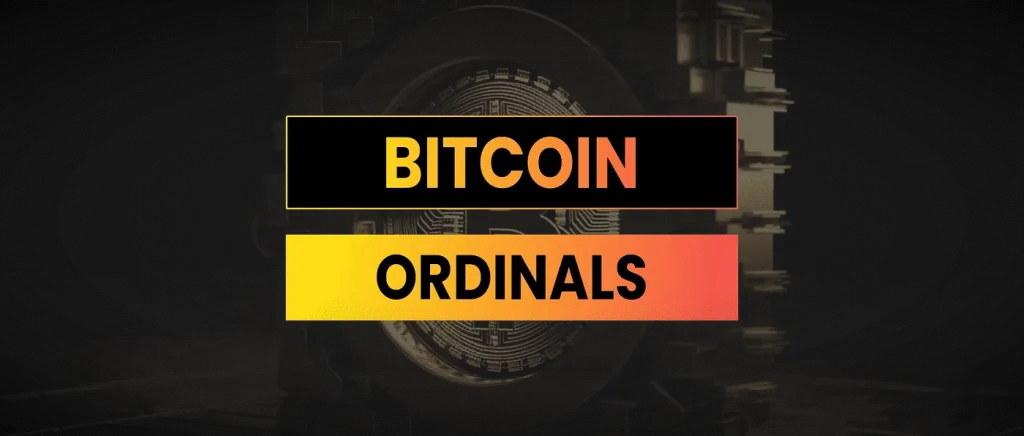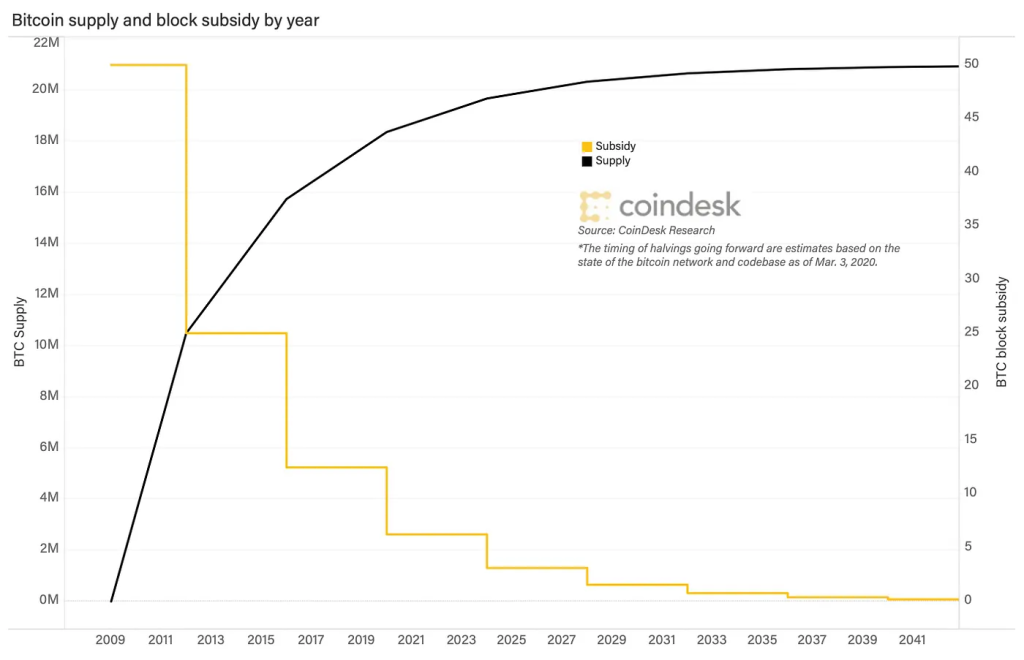
If you've just now heard about the Ordinals for the first time, chances are you've been living in an information vacuum.
Ordinals is a protocol that appeared in January 2023 and literally took Bitcoin by storm. The launch of a new NFT protocol on the Bitcoin blockchain led to even more discord between those who believe that the blockchain should be limited to financial transactions and those who believe that the network can be used for different purposes. Since the protocol opened the ability to host images and other types of data in the blockchain of the first and largest cryptocurrency by market capitalization without using a separate token or sidechain.
Let's take a step back in time and plunge into history

2014, protocol is being created Counter party is one of the first protocols to support Bitcoin NFT. It is a protocol on top of Bitcoin that uses the existing Bitcoin architecture to store and transact arbitrary data (i.e. new tokens). Bitcoin veterans are very familiar with the resources and capabilities of Counterparty.
Counterparty originally used OP_CHECKMULTISIG, which represents operation code for verification of signatures in the transaction hash. Simply put, it is a multi-signature mechanism. With this function, the data was embedded in a set of UTXOs (failed transactions, similar to "stamps" in Bitcoin). However, this was costly, relatively inefficient, and difficult to manage.
Soon Counterparty decided to switch to using OP_RETURN, which proved to be more efficient than OP_CHECKMULTISIG. OP_RETURN does not store data in the UTXO set, which avoids data accumulation and reduces network load. It was limited to 40 bytes of data at the time, but was increased to 80 bytes in 2016. Although OP_RETURN is more efficient, its use has been hotly debated.
The developers of Bitcoin saw this as a blatant abuse of the network — “forcing” miners to post unnecessary data as results that cannot be spent. It has become the beginning of the war.
Legendary Bitcoin developer Jeff Garzik wrote in March 2014 that using Counterparty OP_RETURN was "intellectual laziness". As a better alternative, he proposed the Bitcoin sidechain.

Team Counterparty sought to cooperate with Jeff Garzik and other Bitcoin developers for finding the best way to build your network, which would not damage the core functionality of Bitcoin as a borderless digital currency.
And things were looking up until Luke Jr., another well-known Bitcoin developer, wrote that the miners themselves should filter out "abuses".

His mining pool will soon started filtering transactions counterparty. This led to significant FUD and concerns that the 40-byte limit on OP_RETURN would be further reduced. The Counterparty community soon became angry.
Vitalik Buterin even joined the debate.

According to him, any transaction must be valid until she pay market commission for the amount of data in tx.
Although only a small number of miners ended up joining Counterparty's transaction filtering, it still caused damage. Technically, Counterparty continued its work, however, many of its developers were frustrated with hostility by the Bitcoin development team.
Around the same time, a new project, Ethereum, was being prepared for release. And a lot of Counterparty developers decided switch to Ethereum.
What conclusions can be drawn?
- Counterparty used the existing Bitcoin architecture in a new, unintended way to store arbitrary token data on the network.
- The developers of Bitcoin, the maximalists, hated Counterparty so much for it that they drove the protocol crazy.
- If Counterparty were adopted by Bitcoin developers, perhaps those developers could catalyze a wider dApp and token revolution within Bitcoin itself. Instead, this ecosystem now exists on Ethereum.
What do you think this history lesson is for?
Today there is many parallels between Counterparty and the nascent Ordinals movement. Accordingly, Bitcoin developers despise both. For them, Counterparty, and now Ordinals violate the main use case - only financial transactions.
Thus, Bitcoin seems to believe that Ordinals must be destroyed. As it was with Counterparty. They speak in favor of this two arguments from the bitcoin side:
- Transaction overflow leads to higher commissions for regular transactions.
- Knot swelling leads to centralization.
Let's take a closer look at these arguments.
Gas fees on the Bitcoin network are undoubtedly higher than in the Ordinals paradigm. This makes financial transactions time sensitive, more expensive. However, if you are willing to wait, you can send the transaction at another time and with less gas, and eventually it will will still be confirmed..
Conversely, having full blocks with higher fees for random data game changer for security budget Bitcoin. And by the way, Bitcoin doubles the block reward roughly every 4 years. Accordingly, in 20 years the reward for blocks will be 1/32 of today's, and in 120 years it will be zero.

Many maximalists ignore the security budget issue. However, the trend is clear – wider Bitcoin adoption is likely to overshadow the need for higher fees to secure the network.
What about the second argument? On the one hand, the block bootstrapping (IBD) process in a full Bitcoin node requires more data to storethan before due to the increased size of the witness section (SegWit). However, SegWit can be truncated after they are loaded, and nodes have the ability to discard them.
In addition, since signature data is optional, not all of them need to be fully checked at boot time. In each new release of Bitcoin Core, developers include "suggested certainty" function (assumevalid), which allows nodes to skip signature verification for old blocks. It's essential reduces computing powerneeded to bootstrap blocks, as nodes only need to validate important transaction data in 1MB blocks.
Thus, the use of the blockchain with SegWit leads to increase in occupied disk space (unless truncate the data), but it requires minimum additional computing time (due to the assumption of the reliability of old blocks).
Looking at these facts, it is unlikely that the Ordinals can significantly damage the basic premise of bitcoin. Like Counterparty, the main reason Maximalists want to destroy the Ordinals is because it contrary to their spirit. For them, Bitcoin is as ideological as it is technological. Bitcoin is beautiful because it is the most secure cryptocurrency, not subject to censorship.
And what can be done to censor the Ordinals?
As with Counterparty, Ordinals would be extremely hard to censor. However, you may know Ordisrespector a patch filter introduced in March that detects transactions similar to Ordinals, and rejects their. By the way, Ordisrespector was created by the same Luke Jr., who filtered Counterparty transactions back in 2014. Bitcoin developers want censor ordinals. Pretty ironic, right?
Only in the case of Ordinals, things are a little different. While some individual nodes run on top of Ordisrespector, larger mining pools will most likely never do so on their own, simply because it is uneconomical. Thus, the only legal option remains a hard fork of the network. And very doubtfulthat miners will support a fork that could lead to the destruction of the Ordinals. It is possible that some of the miners (the same ones currently using Ordisrespector) may switch to the Anti-Ord fork. But it is not exactly.
And this is all despite the fact that the hype around the Ordinals inevitably affected on the income of miners and their structure - daily income from commissions in terms of the block for the fifth time in history exceeded rewards from its mining (6.25 BTC). This was last seen on peak of the bull market in 2017.
Ordinals, in turn, use key innovations, introduced by SegWit and Taproot, which existed long before that. Aimed primarily at solving SegWit's scalability problem changed block structure, allowing the separation of signatures from the process of their transmission. And Taproot, among other things, contributed to cheaper and more privacy transactions. Rejection of this architecture would be the only way to prevent emergence of new inscriptions.
Although fiasco with Ordisrespector was short-lived, it caused some alarm bells. This won't stop the Maximalists from trying to destroy the Ordinals, and it will not the last attack in a protracted battle.
Will Ordinals repeat the fate of Counterparty?
Unlike Counterparty in 2014, Ordinals developers prefer to use Bitcoin because of its unique immutable storage properties and a thriving culture. However, this does not prevent Ethereum and Solana from also experimenting with Ordinals.
The Ordinals have powerful supporters, access to resources, and significant cultural capital. While Counterparty came into existence much earlier, when Bitcoin as a whole was not ready for the NFT concept, and the Ethereum network has made steady progress in this area. However, today the dynamics have changed, and outside interest in Bitcoin NFT increased sharply.
What's next for the Ordinals?
The next stage in the Ordinals' journey will most likely include move some activity Ordinals in Layer 2 rollup. In particular, the BRC-20 is well suited due to transaction rates and infrastructure opportunities DEX on L2. This will help solve the congestion problem.
Results
- The clash between Bitcoin and the Ordinals is neither the first nor the last.
- The history of Counterparty contains important lessons for the Ordinals.
- Despite the fact that there is some truth in the arguments of the opponents of the Ordinals, they are mostly exaggerated.
- Ordinals provide a potential solution to the Bitcoin security budget problem.
- Ordinals would be very difficult to censor without the support of miners.
- While the maximalists destroyed the Counterparty, the Ordinals are built in a completely different way.
Based thread: Evaneskate
